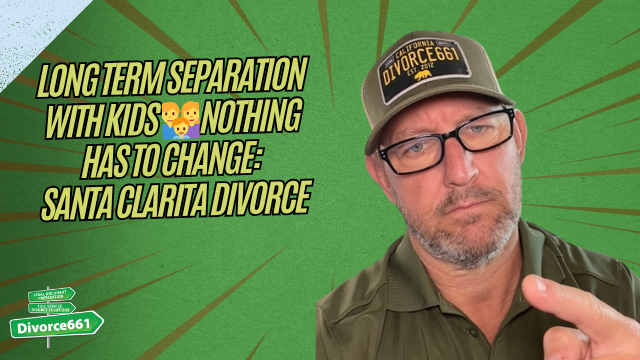😳 Couple Separated 23 Years JUST Filed for Divorce❣️ Now Can’t Buy a Home 🏠
When a couple has been separated for over two decades but never officially divorced, it may seem like a mere technicality—until real-life complications arise. This was exactly the case for a client I recently helped, who had been separated since 2001 but had never filed for divorce. While the long separation itself didn’t complicate the divorce process, the real issue came to light when she tried to purchase a home and couldn’t secure a loan because she was still legally married.
Long-Term Separation Without Divorce: What You Need to Know
Being separated from your spouse for years without filing for divorce is surprisingly common. Many couples drift apart, live separate lives, and simply never take the final legal step to dissolve the marriage. In most cases, this doesn’t add complexity to the eventual divorce—especially if you know where your spouse is and they are cooperative throughout the process.
However, the legal bond remains intact until the divorce is finalized. This means any financial, legal, or personal decisions that require proof of single status can become tangled in red tape.
Why Divorce Matters When Buying a Home
For my client, the issue came to a head when she tried to buy a house. Even though she had been separated for 23 years, lenders saw her as still married, which affected her ability to get a mortgage loan. Being legally married can complicate loan applications because lenders typically consider the financial obligations of both spouses—even if you have no contact or shared finances.
Until the divorce is finalized, you remain legally responsible for your spouse’s debts and vice versa. This can cause lenders to hesitate or deny loan approval, impacting your ability to secure financing for a new home.
Filing for Divorce After a Long Separation
Filing for divorce after a long separation doesn’t necessarily mean a complicated or contentious process. In fact, if both parties are cooperative and communicative, the divorce can proceed smoothly. The key is to officially end the legal marriage to clear the way for future financial and personal decisions.
In this case, the client’s inability to purchase a home was the motivation to finally file for divorce. Once the divorce is finalized, she will be free to move forward with her home purchase without the legal and financial entanglements that come with being married.
Key Takeaways
- Being separated for years without filing for divorce is common but can cause legal and financial complications.
- Until a divorce is finalized, you are still legally married, which affects credit, loans, and other financial decisions.
- Cooperation from both spouses usually makes the divorce process straightforward, even after many years of separation.
- If you’re planning major life changes like buying a home, finalizing your divorce can be an essential step to avoid unexpected hurdles.
Final Thoughts
Separation might feel like the end of a marriage, but legally, the marriage continues until you file and finalize a divorce. For those who have been separated for years, it’s important to understand how this legal status can impact your financial life and personal goals. If you find yourself unable to move forward with important decisions like buying a home, it might be time to consider taking the legal steps to finalize your divorce.
Remember, a smooth divorce process is often possible with cooperation and clear communication. Don’t let a long separation hold you back from the next chapter of your life.




